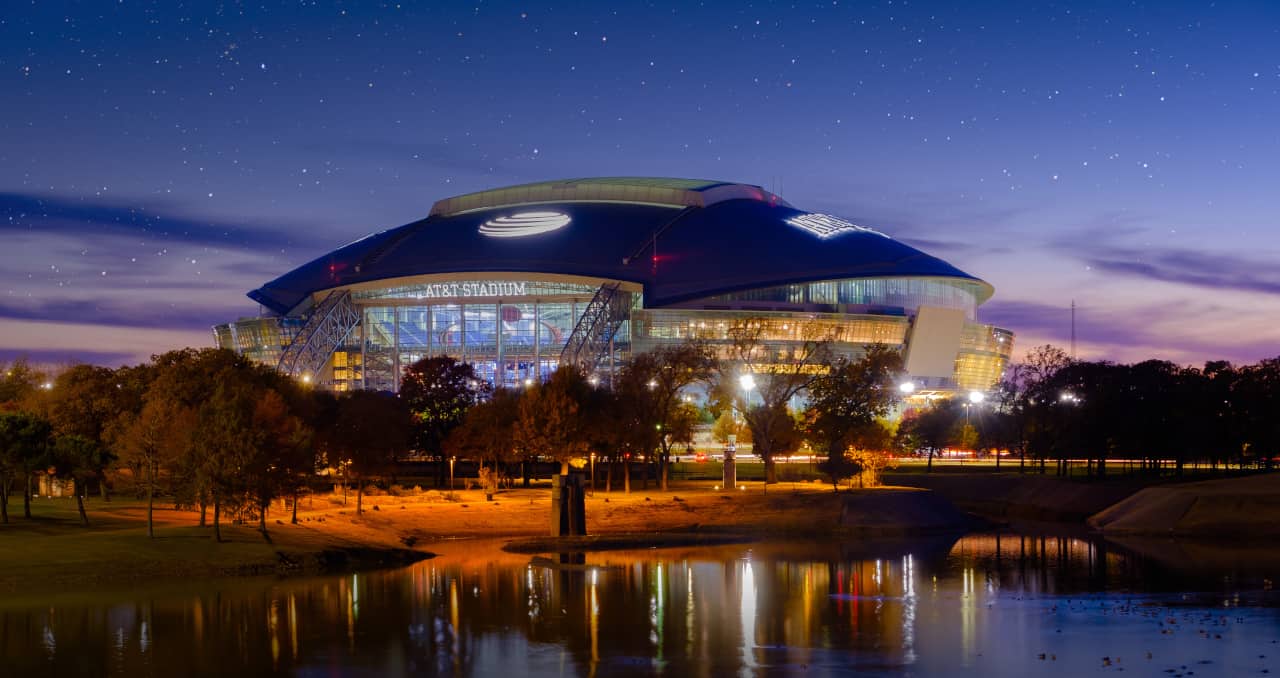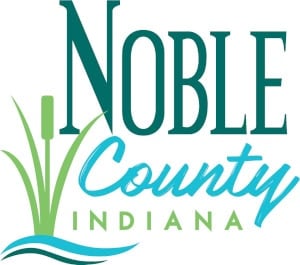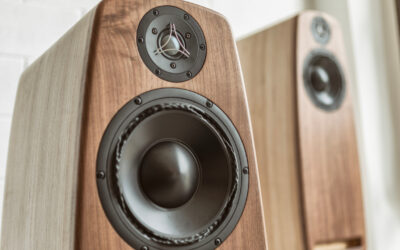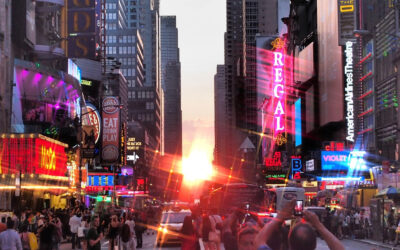With the opening of Dallas Cowboys Stadium in 2009, team owner Jerry Jones started an arms race for facilities, amenities and luxury experiences that is still raging over a decade later.
“It takes on an almost religious experience…I just have to pinch myself that I’m getting a chance to be a part of doing this for the Dallas Cowboys,” Jones told Associated Press at the time.
Related: Cigar review: A look at the premium, well-balanced and silky smooth Cohiba Siglo IV
In recent years, we’ve seen venues transform from simple fields, parks or grounds into cathedrals, palaces and meccas. Some of these would have looked entirely foreign to any sports fan just a couple of decades previous.
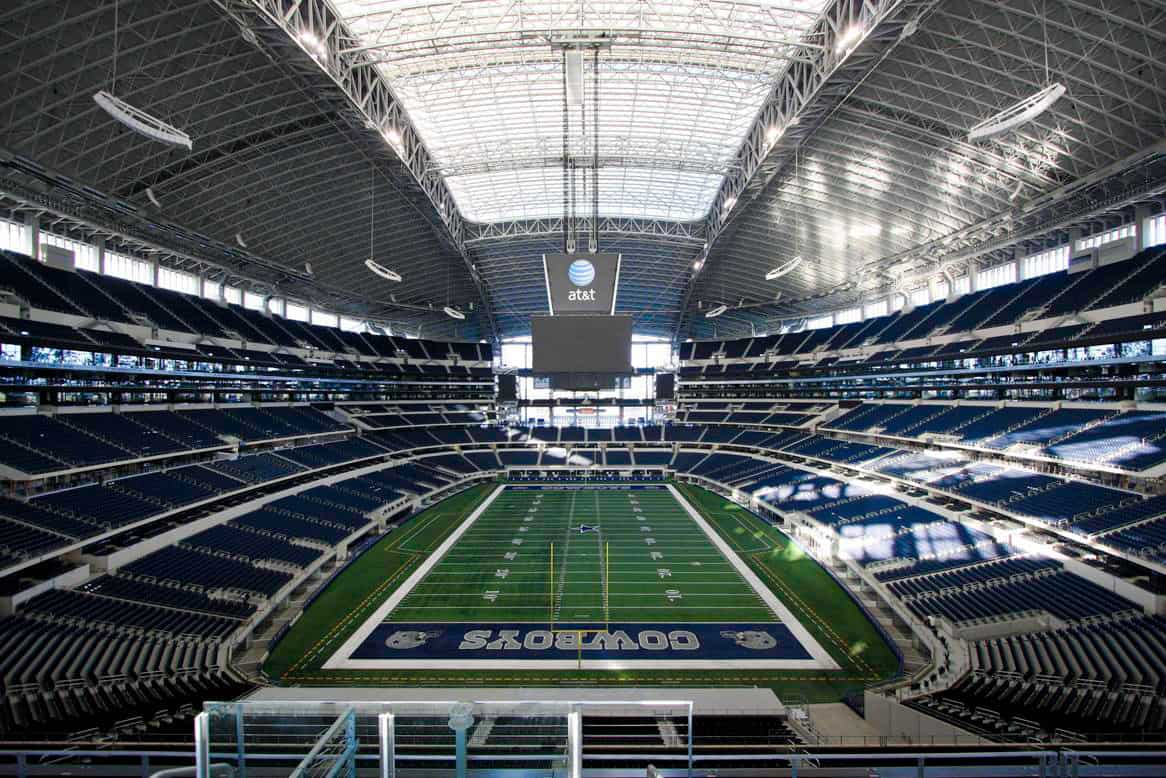
AT&T Stadium, image source: Wikipedia
To understand just how influential Dallas Cowboys Stadium was (top image, source: Shutterstock), we must look at the last stadium built before Jones’ palace opened its doors.
Lucas Oil Stadium in Indianapolis is nice, sure. But it differs from Jones’ masterpiece on one key element. “The House that Peyton Built” relies on its downtown location for most of its style points. In Dallas, the stadium known colloquially as Jerry World is the location.
How ’bout them Cowboys
It cost $1.3 billion (the first NFL stadium to ever eclipse the billion-dollar mark) and occupies three million square feet. Cowboys Stadium came complete with a record-setting, centre-hung LED scoreboard. A “world-class art collection” and a Victoria’s Secret store are all within its confines.
The building has managed to keep up with the times too, adding a 19,000 square foot restaurant in 2016. They brought in new virtual reality photo booths in 2019. Then there was that other revenue stream, when in 2013 Jones sold the stadium’s naming rights to telecom giant AT&T.
Billion dollar, lavish enclaves
The legacy of Jerry World is evident in all corners of the country. Since Jones unveiled the venue in 2009, the NFL has added six more stadiums to its portfolio. Every single one has cost over a billion dollars. Each one is seemingly more lavish than the last. In contrast, the average cost of the 10 NFL stadiums built between 2000-2009 was only $435 million.
Many stadiums in the aughts settled for exposed fields in cold climates (Pittsburgh, Denver, Philadelphia, Cincinnati and New England, we’re looking at you). Palaces post-Jones are for the most part equipped with either retractable or permanent roofs. That’s except for sunny San Francisco and the shared home of the New York Giants and Jets.
Fantasy update lounges for fans
So, what types of amenities do today’s takes on football stadiums afford the wealthy fan? Well, each venue hosts its own unique set of options that cater to the rich and famous.
Located in and amongst the suites at San Francisco’s Levi’s Stadium, the Yahoo! Fantasy Football Lounge broadcasts live fantasy football updates to fans. That’s while the 49ers create their own stats on the field. This allows fans to keep one eye on the live action on the field, and another on their fantasy team.
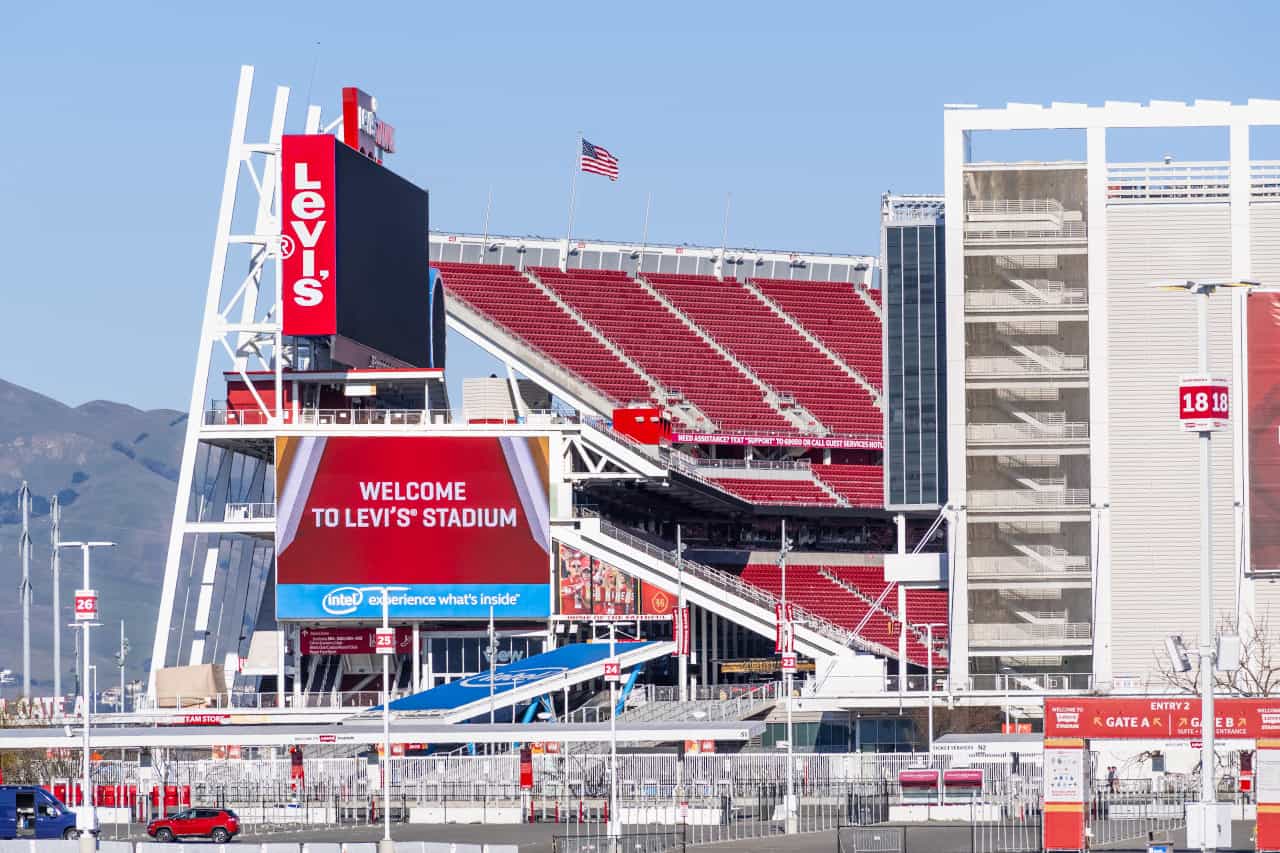
More interested in the game on the field? Then try Atlanta’s 360-degree video board on for size. The massive screen in Mercedes-Benz Stadium wraps around the entirety of the inner lip of the roof. That allows every fan in the $1.5 billion-dollar venue to have a perfect view of replays, highlights and in-game entertainment.
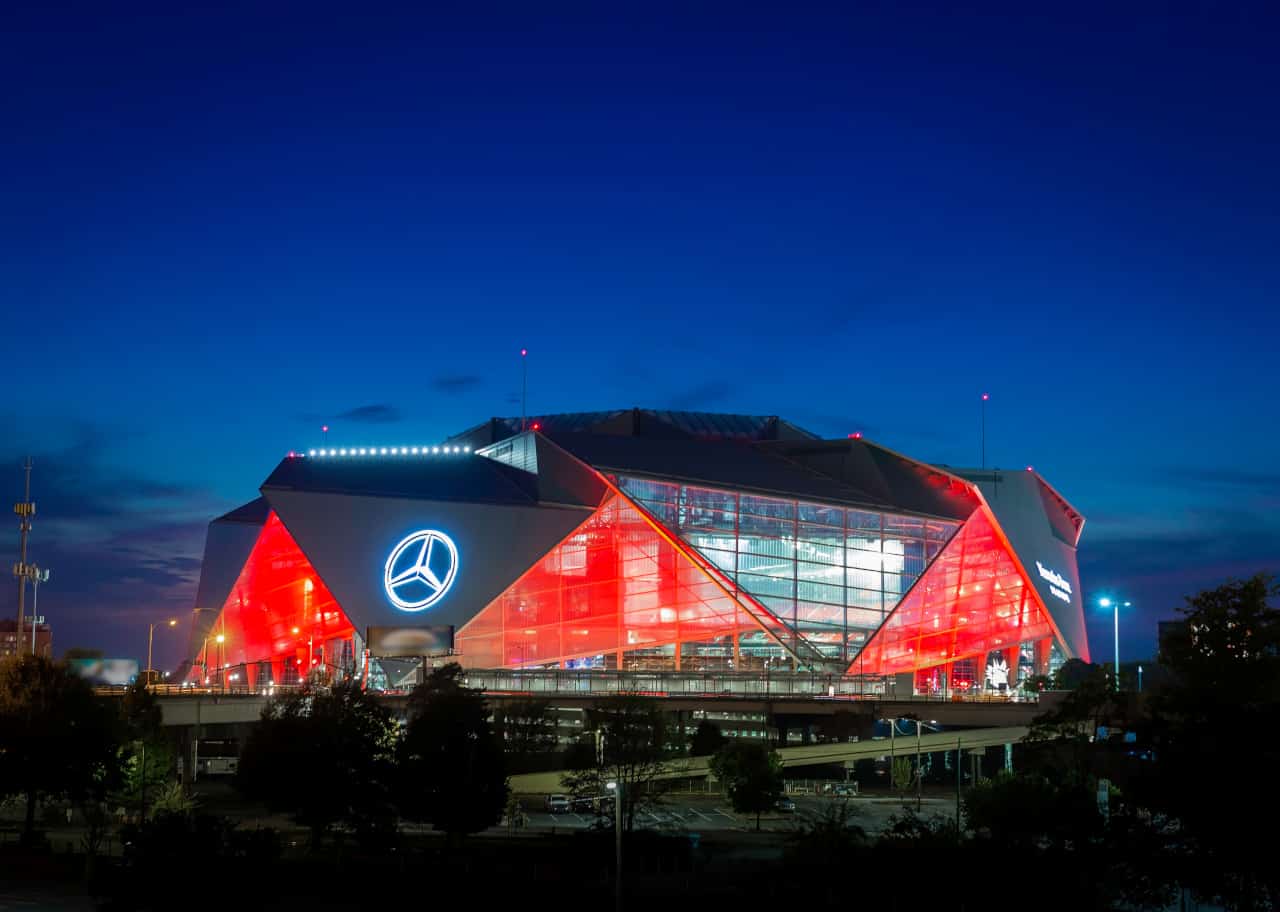
Today’s architects have even considered the old-school fan in their designs. The Minnesota Vikings’ $1.1 billion-dollar US Bank Stadium has an translucent roof and pivoting glass doors. So the fans, there are copious amounts of natural light to come pouring in. This unique attribute prompted Popular Mechanics to say that the stadium “almost feels like it’s outdoors.”
Glass palace
The new roof is a far cry from the Vikings’ old dome, a pressurized tarp that gave way due to snow accumulation in 2010. Nowadays, the Vikings bring the outdoors in, without the roof collapse.
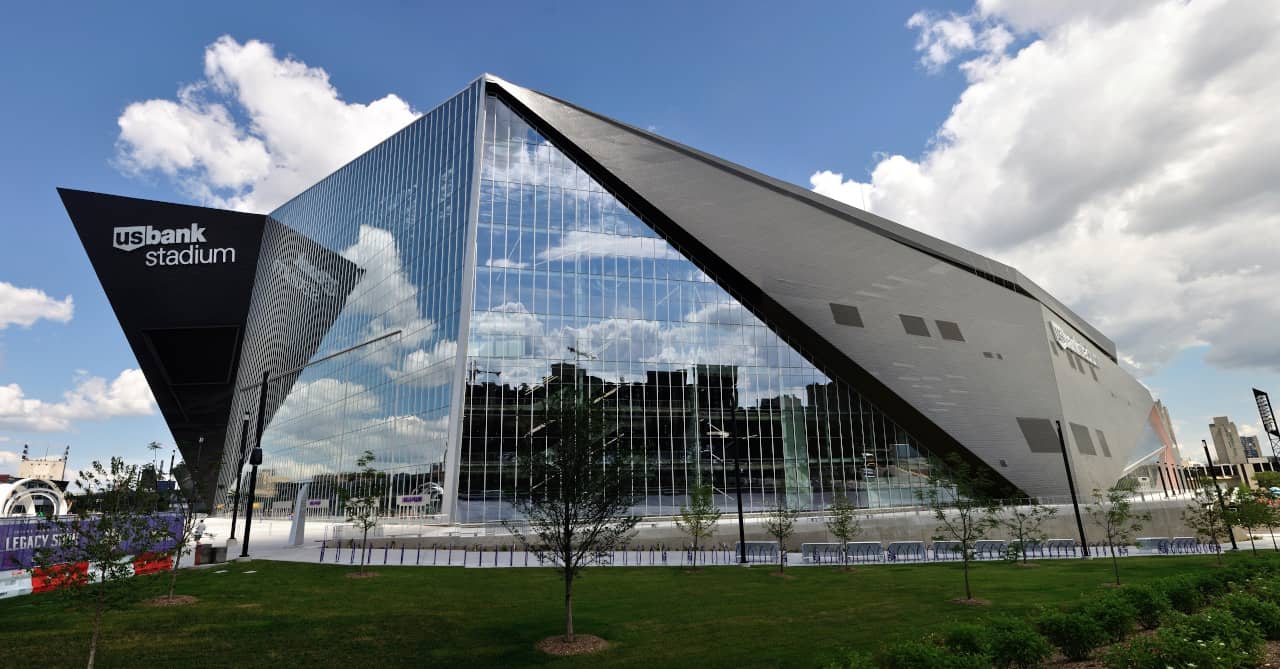
But all of that pales in comparison to Los Angeles’ new SoFi Stadium. The average cost of every stadium built after Jerry World, but not named SoFi, is $1.48 billion. The highest is $1.9 billion-dollar Allegiant Stadium, the Las Vegas Raiders’ new home in the desert. SoFi is set to debut in 2020 at the almost unfathomable cost of $4.9 billion.
Set to play host to both the Los Angeles Rams and the Los Angeles Chargers, SoFi Stadium is an unparalleled look into the modern, profit-maximizing owner.
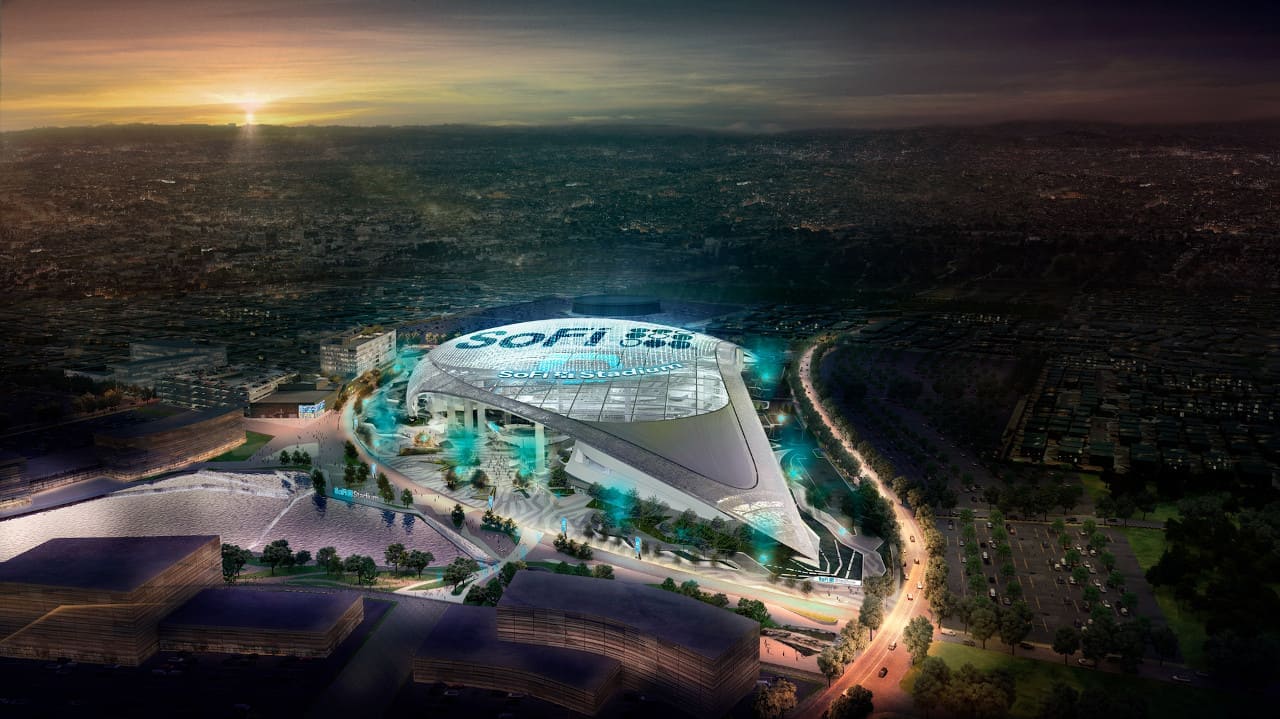
Pure opulence
The “centerpiece of a 298-acre mixed-use development featuring retail, commercial office space, a hotel, residential units, and outdoor park spaces,” says Rams owner Stan Kroenke. In the image of Jerry Jones of the Dallas Cowboys, he has turned his venue into not just a destination. It’s a place where you feasibly might never even have to leave. With football at the centre of his plans, Kroenke has built his own sort of commune, with all revenue streams pumping back to him.
As far as amenities within the actual stadium go, any word short of opulent would be underselling it. A transparent roof and open-air sides have led developers to declare it the “first indoor-outdoor stadium to be constructed.”
Private bathrooms
On top of that, a patio featuring every plant native to California, save for the Redwood, beckons fans who need a break from the action. When fans are allowed back in stadiums, over 260 suites await the swankiest Angelenos. And 180 have their own private bathrooms. Each suite has operable glass as well, meaning that occupants can choose to either air-condition their space, or open it up to the outdoor environment.
New upgrades coming to Rogers Centre?
As far as things go here in Toronto, well, we certainly aren’t drinking the same Kool-Aid that we see with some locales down south. But there are still some cool features to check out around the city.
BMO Field just recently received a funding injection of $100 million dollars. That went towards adding a second tier, new suites and the BMO Club. Those seats offer field-level views and food stations offering tastes from around the world.
Long the black sheep of the Toronto stadium scene, the Rogers Centre is also eyeing some upgrades. Conversation so far has been vague, but president Mark Shapiro seems keen to get the ball rolling.
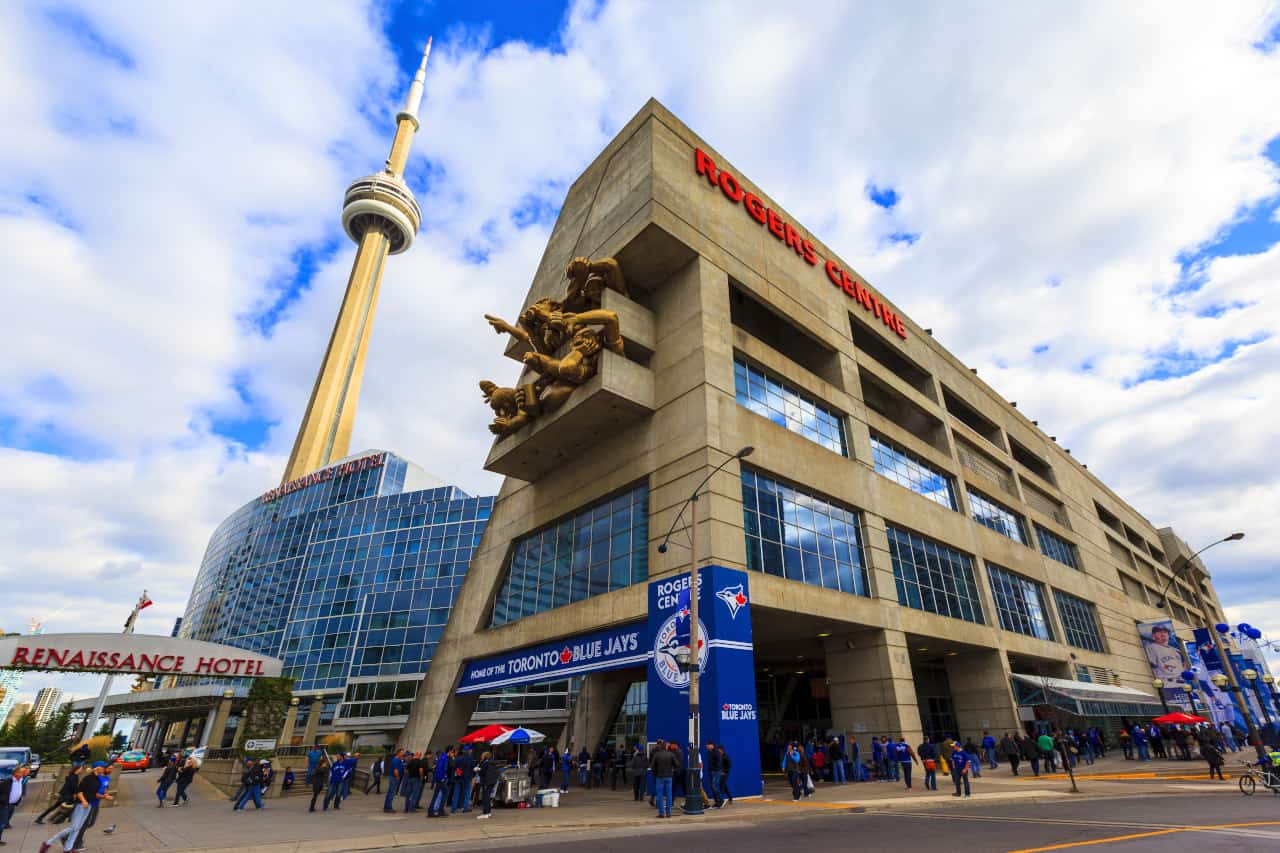
From 2000-2009, it looked like NFL stadium spending had plateaued. Then, Jerry Jones and the Dallas Cowboys happened. From 2009-2019, again, coliseum consumption had stagnated. Then, Stan Kroenke came along, and blew everything we thought we knew about stadiums out of the water.
It must be stated that Kroenke is one of the richest owners in the league. So not every team will be able to build a $4.9 billion-dollar venue. But has Kroenke’s cathedral finally put an end to the amenities arms race? Logic, and quite frankly, faith in humanity, says yes.
But history says no.



